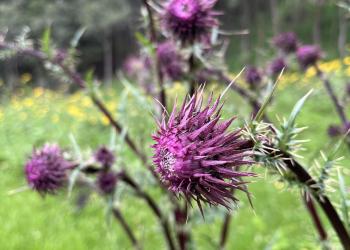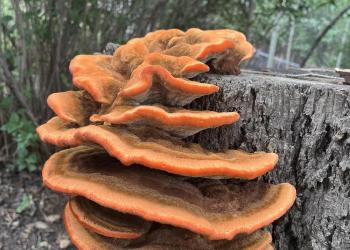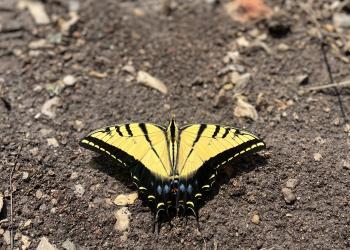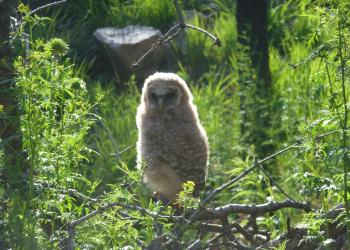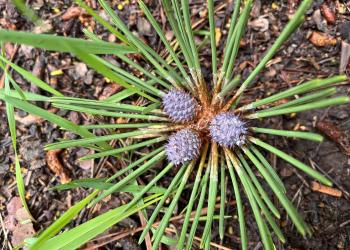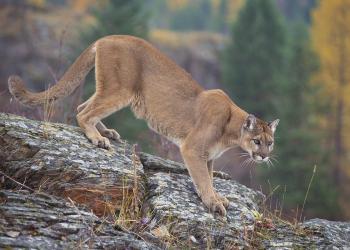Animals and Plants
The Lincoln National Forest is a living tapestry of life, showcasing a rich diversity of animals and plants across varied ecosystems—from high-elevation forests and rugged canyons to desert riparian zones. This natural haven supports species adapted to its dynamic climate and terrain, offering visitors endless opportunities to observe nature in all its forms.
This diverse ecosystem supports a rich variety of wildlife, from desert reptiles to alpine mammals. The Lincoln National Forest is a testament to the power of nature and the importance of conservation.
Plant and Animal Photo Gallery
Wildlife
The Lincoln National Forest provides habitat for a diverse number of wildlife species - from highly coveted fish and game animals, to rare endangered species. For wildlife enthusiast of all types, the Lincoln has a lot to offer. Learn about various desert critters that live in Southern New Mexico.
Diverse Habitats
- Mountain Forests: Towering pines, junipers, and aspen dominate these high-elevation areas, creating a cool, shaded environment ideal for a variety of wildlife.
- Desert & Canyon Landscapes: In lower, arid regions, drought-resistant plants and cacti thrive alongside meandering streams and rugged rock outcrops.
- Riparian Zones: Along creeks and rivers, lush vegetation supports an abundance of birdlife and small mammals, providing essential water and food resources in an otherwise dry landscape.
Fauna of Lincoln National Forest
Black Bear on the Sacramento Ranger District
(Clint Walker)The wildlife here is as varied as the landscapes they inhabit:
- Mammals: Visitors might spot mule deer, elk, and black bears roaming the forest. Smaller mammals such as squirrels, chipmunks, and rabbits are common, as are the elusive predators like mountain lions.
- Birds: The forest is a birdwatcher’s paradise with species ranging from raptors (such as red-tailed hawks and golden eagles) to songbirds, woodpeckers, and waterfowl in riparian areas. Migratory birds also make seasonal visits, adding to the avian diversity.
- Reptiles & Amphibians: In the warmer, drier regions, lizards and snakes are frequently seen, while amphibians—though less common—can be found in the moist environments of mountain streams and riparian zones.
- Invertebrates: A diverse array of insects, spiders, and other invertebrates play crucial roles in pollination and as a food source for many of the forest’s inhabitants.
Popular Game Species
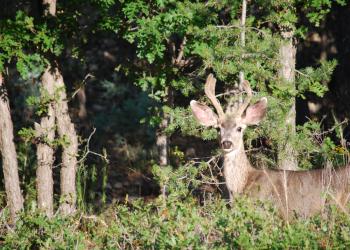
- Rocky Mountain Elk
- Mule Deer
- Aoudad (Barbary Sheep)
- American Black Bear (facts and safety)
- Merriam’s Wild Turkey
Endangered Species

- Mexican Spotted Owl
- New Mexico Meadow Jumping Mouse
- Checkerspot Butterfly
- Sacramento Mountain Salamander
Plants
Flora of Lincoln National Forest
The plant life in Lincoln National Forest reflects the region’s unique blend of desert, mountain, and riparian ecosystems:
- Coniferous Forests: Dominated by ponderosa pine, Douglas fir, and aspen, these forests provide critical habitat and help stabilize the soil.
- Desert Flora: Hardy species such as sagebrush, creosote bush, and various cacti adapt to the arid climate, offering bursts of color and texture in the desert landscape.
- Wildflowers & Shrubs: Seasonal wildflower blooms—ranging from vibrant Indian paintbrush to delicate penstemon—add splashes of color to trails and open meadows, while native shrubs provide cover and food for local wildlife.
- Riparian Vegetation: Willows, cottonwoods, and other moisture-loving plants thrive near water sources, forming essential corridors for migratory birds and small mammals.
Southwestern Region Observations

See what others nearby have shared in the Southwestern Region, then add your own observations.
Exotic and Invasive Species
Invasive Species in Region 3
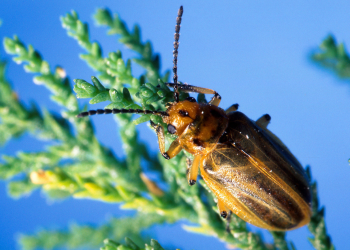
Invasive species threatening Region 3 range from disease pathogens to mammals. The U.S. Forest Service has developed a number of regional documents for invasive identification and management in the Invasive Species Field Guide.




